In the penultimate part of our Adventure Addicts series, confirmed roadie Sam Dansie heads onto the gravel for the first time. The fact that it’s at the country’s toughest gravel event, the Dirty Reiver, complicates matters…
- Gravel riding explained: Adventure Addicts part 1
- How to have a gravel adventure: Adventure Addicts part 2
It was hard to know what hurt more. The palms of my filthy hands, which had been pummelled pink and raw, my cramp-infested calf muscles, or my back, which ached at the bottom and was excruciating at the top.
Eight and three quarter hours into the Dirty Reiver and I finally made it to the crest of what felt like the hundredth hill. I’d seen a lot of single digit speed while climbing during the day, but the stubborn 7km/h I had seen for the previous 15 minutes was a spirit-sapping assault all of its own.
Over the crest and a chance to sit cockeyed on my saddle. Let’s just say 182km on gravel does unspeakable things to a bottom unused to this sort of thing. Now I had a view of the descent. The dark stones seemed almost set, like a five-star section of Paris-Roubaix, and the road coiled around the next hill.
Let’s just say 182km of gravel does unspeakable things to a bottom...
I didn’t think things could get worse, but then I hadn’t come across a descent like this yet. It was too bumpy to sit and too fast to stand and halfway down, my saddlebag sheared off and bounced into the verge. I juddered to a halt 30m or so further on. I thought about leaving the bag where it fell.
With slightly more than 10km to ride, 60 more metres felt like too high a price to pay for a multi-tool, a spare inner and a repair kit. But there was a gel in it and I did want that. I needed that. I dropped the bike, trudged back up the hill and sat beside the track and had my gel. God, I was fed up.
Wild, wild world
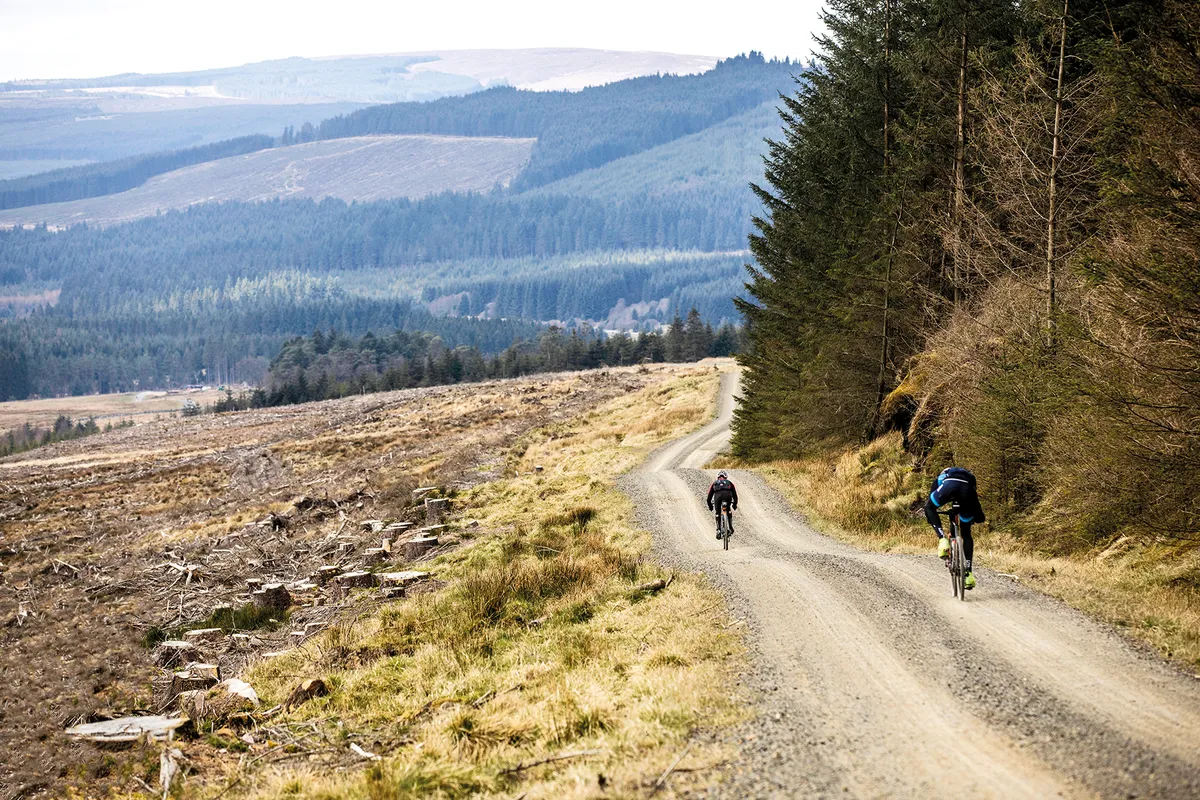
Kielder. Big forest. Lots of hills. Miles and miles of gravel roads. No wonder the Dirty Reiver is ground zero for gravel grinding in the UK.
This sizeable pocket of the country is a remote forested wilderness with a big reservoir at its green heart. The event’s HQ is Kielder Castle at the northern end of Kielder Water. The castle’s not a castle, but a former hunting lodge built in the 1770s for the Dukes of Northumberland. It harks back to a time when the area was just heather, bracken and wind.
In the 1920s, the Forestry Commission began planting the forest and in the 1970s the dam was built to provide water for the north-east industries. It’s an entirely man-made landscape.
With 3,700m of climbing it’s on par with the Fred Whitton Challenge
Prior to all this, it had been a lawless borderland infested with eponymous Reivers – the raiding parties who used the porous England-Scotland border to rustle livestock.
Today, among Kielder’s numerous claims to fame are that the Water is the biggest by volume man-made reservoir in northern Europe; the forest is home to 50 per cent of the UK’s red squirrels; and that the night sky above it is so pristine and free of light pollution that the region has been designated a Dark Sky Park. It’s the biggest sky park of its kind in Europe.
The Dirty Reiver takes a fraction of the open access trails used by the logging works and turns them into a well marked 200km course, though this year’s came in shorter because of a last-minute re-routing to avoid some bike-breaking trails.
The route still held around 3,700m of climbing though, putting it on par with the Fred Whitton Challenge. But it’s exclusively on gravel. So it’s very hard and very long, and why, with less than 15km to go, I got out my phone to navigate a shortcut back to the castle.
- How to ride gravel: Adventure Addicts part 3
- Best gravel riding routes in the UK | 6 rides recommended by Cycling Plus
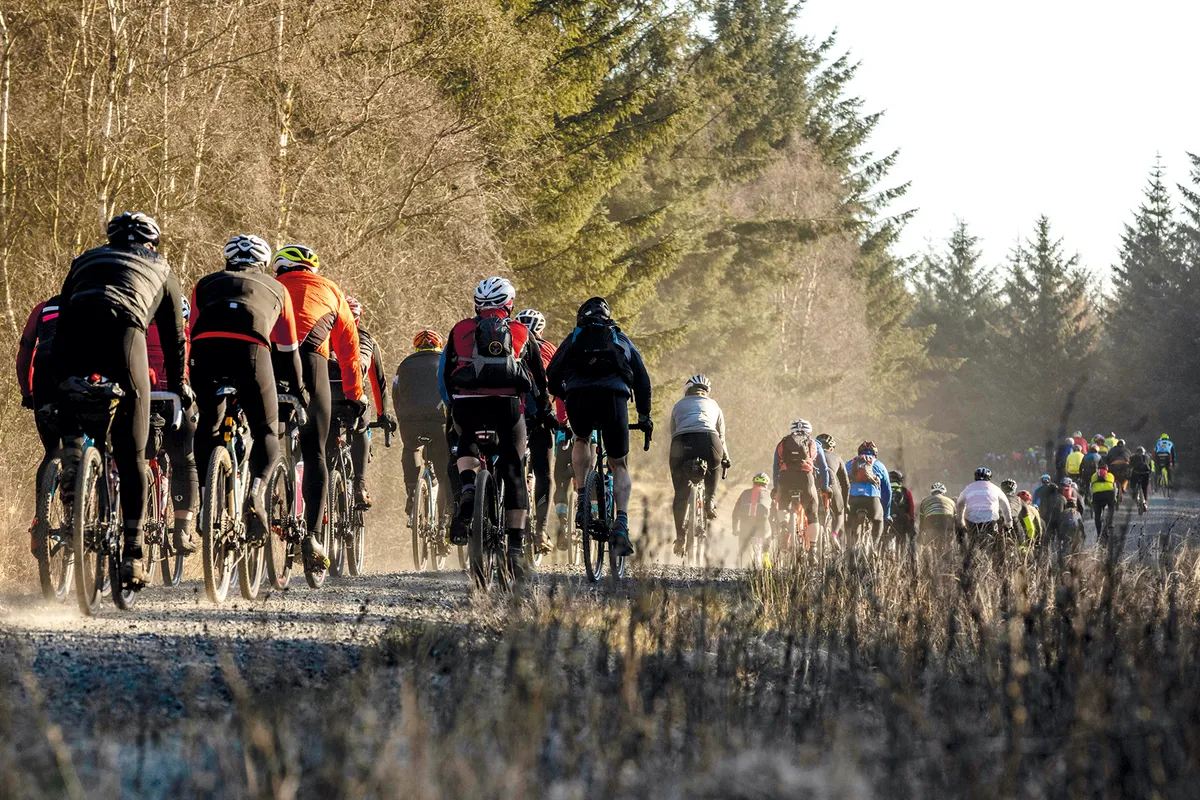
A matter of survival
Anyway, all that came later. At 7am, an hour before the start, the car thermometer registered -4°C. Hardy souls who camped in the teepee village put on to increase accommodation in this wilderness surely made early use of the top item on the Dirty Reiver’s essential kit list: a survival blanket. Other requisites included an emergency whistle and a first aid kit.
The list also specified a good front light. Given that dusk fell at 8:10pm, just how long was this thing going to take? "Make sure that you carry essential spares and have the ability to undertake rudimentary repairs; parts of the route are remote," stated the Dirty Reiver’s website. But at least the day was dry. A man queuing for coffee told me they had snow a couple of years earlier.
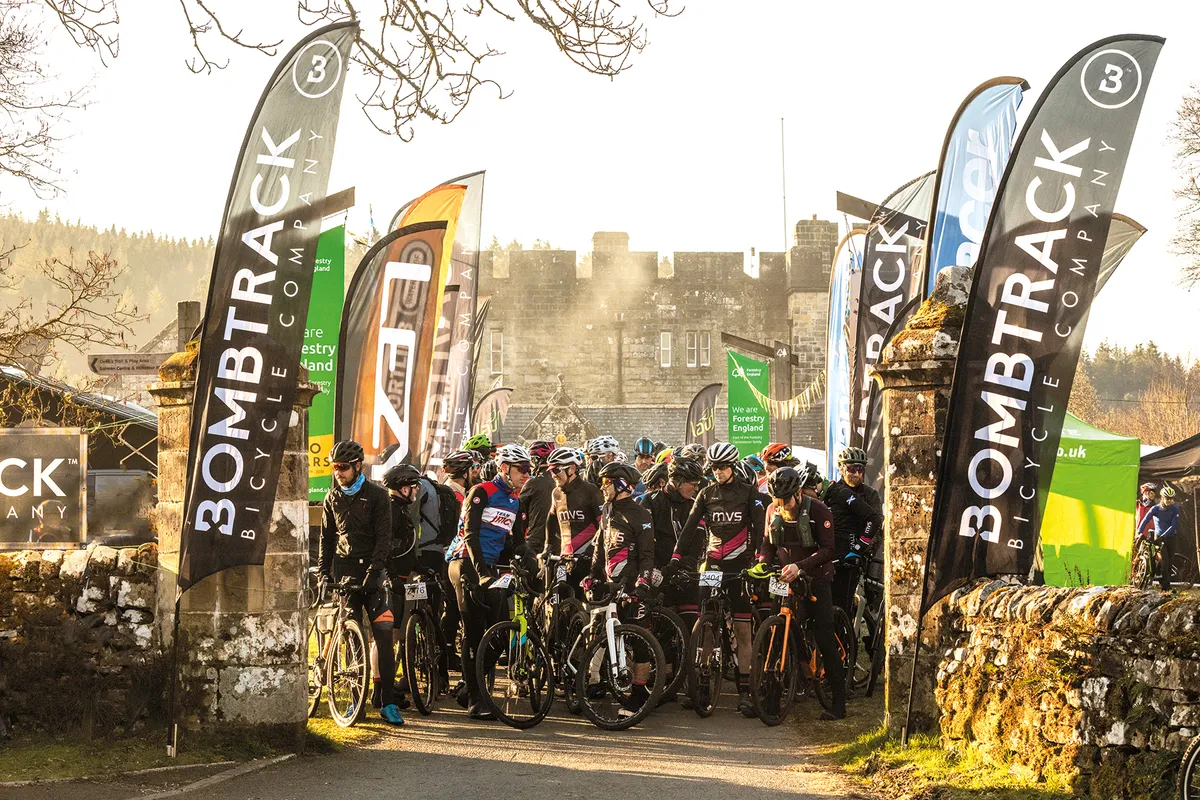
At the start, I was taken by the high number of gravel bikes. Bryan Singleton, the director of Focal Events, which puts on the Reiver, reports that when it was first run in 2016, cyclocross bikes were the preferred choice among the 600 debutantes. Four years on, the vast majority of the 1,000-plus field were on dedicated adventure machines.
The Reiver also has a sizeable gravel bike expo to peruse before or after the previous evening’s pasta party. The exhibition is a testament, says Singleton, to the Reiver’s pioneering role in bringing gravel to the UK.
Paul Errington, Focal Events’s co-founder who has now left the firm, had ridden Kansas’s hugely popular Dirty Kanza gravel race a few times and twigged that Kielder was the perfect place for a UK equivalent.
Incidentally, my bike was a Scott Addict Gravel 20 with a Shimano 105 groupset, so I felt I was swimming with the shoal. Road riding is all I’d ever done and my expectations were that the bike, with its slacker geometry and voluminous, lightly treaded Schwalbe G-One Allround tyres would feel sluggish and boat like.
Wrong. It was a good deal lighter than I anticipated and on a road, it felt like a road bike. It was nippy and nimble, but also very smooth. I’d never ridden on gravel before, so judgement would be saved for later.
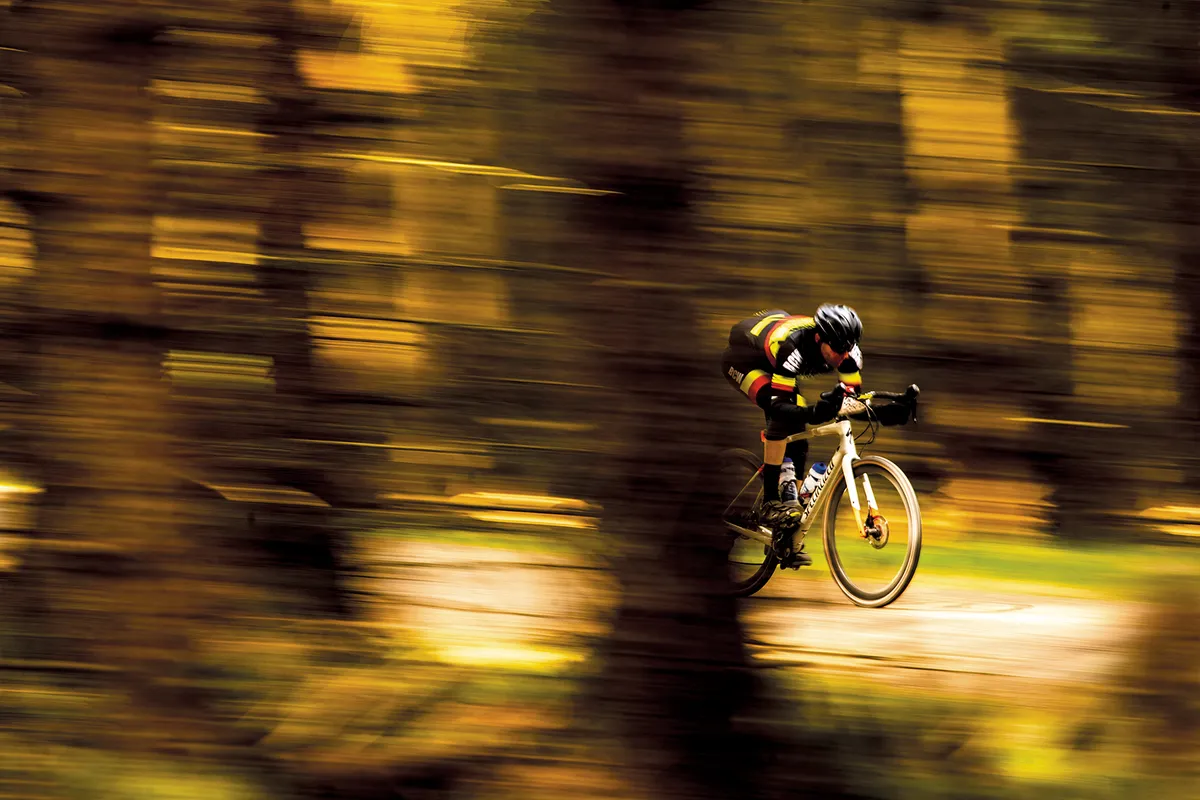
The Dirty Reiver is not a race, but it is timed. Fast people do it in around seven and a half hours, and slow people do it in around 11.
This year’s route was substantially different to the last few years. On a map, previous routes have been flatter along an east-west axis, this one was longer on the north-south axis. In fact, it went so far south it technically entered another forest – Wark Forest.
Talking afterwards, Singleton insisted the gravel in Wark was “very, very fast”. I sensed Brian was a gravel connoisseur, someone who can discern notes of vermiculite among the fine gravel and knows about road metal – the hard-packed graded surface beneath the gravel. It was all just rocks to me.
About the most sensible thing I did all day was take it easy at the start. Although it was cold and the legs were willing, I resisted the temptation to tag onto the back of some rocket in the first two hours. This gave me time to be at one with the bike and come to terms with the fact I would either be cycling very slowly uphill and freewheeling at terrifying speed down the other side for the rest of the day.
This slow start also gave time for faster riders to lay down a fine white line in the road metal, which was free of loose aggregate and to which I adhered for the rest of the day.
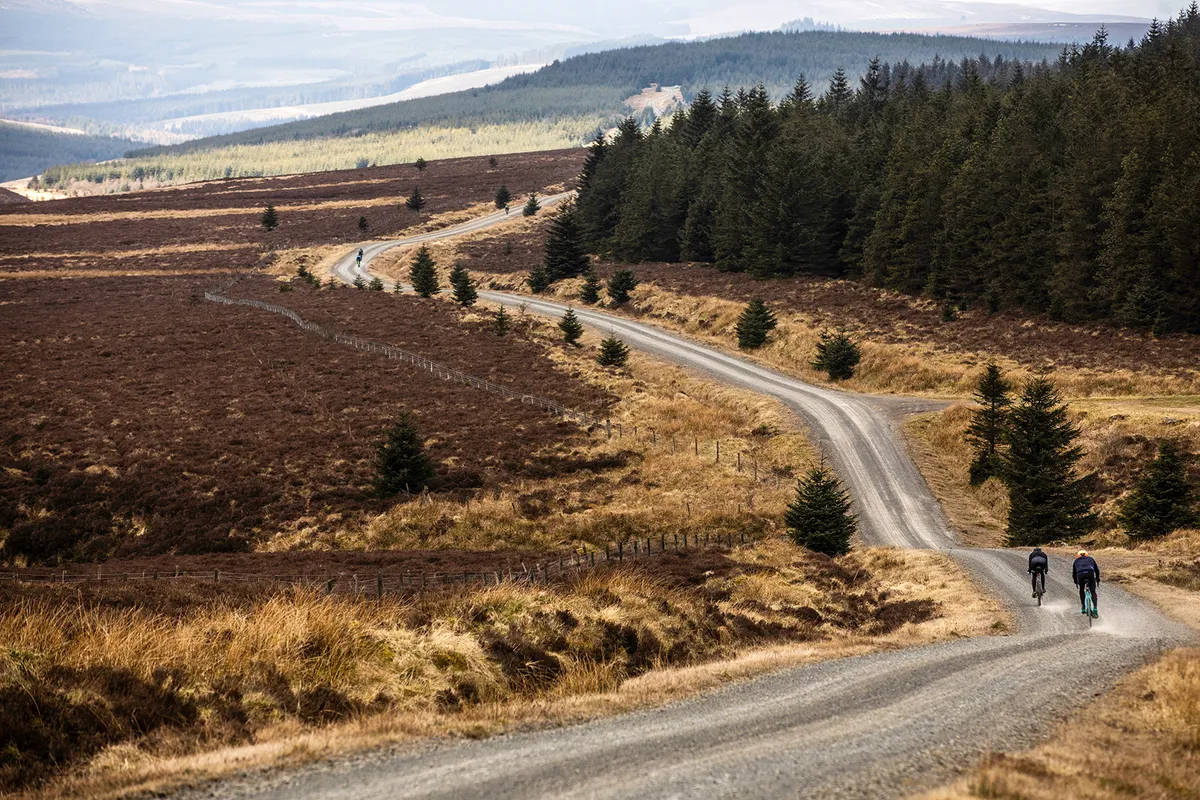
Kielder Forest is open to the public and technically anyone could ride a Dirty Reiver-like route any time they wished. But the benefit of doing it on Reiver day is that the route avoids those parts of the forest where tree harvesters and hauliers are working. I saw one moving vehicle on the roads all day.
My sedate pace allowed me to look around. Being a forest there are a lot of trees and lots of one species in particular: Picea sitchensis – sitka spruce. It’s the lumberjack’s preferred conifer.
It is fast-growing and extremely tall when it thrives in wet, upland areas, which is what Kielder is. A sitka plantation is eerie. Light can’t penetrate, so at eye level it’s dark and still and very quiet. But a light wind – or even a stiff one, like the frigid easterly on Reiver day – moans through the trees’ upper reaches.
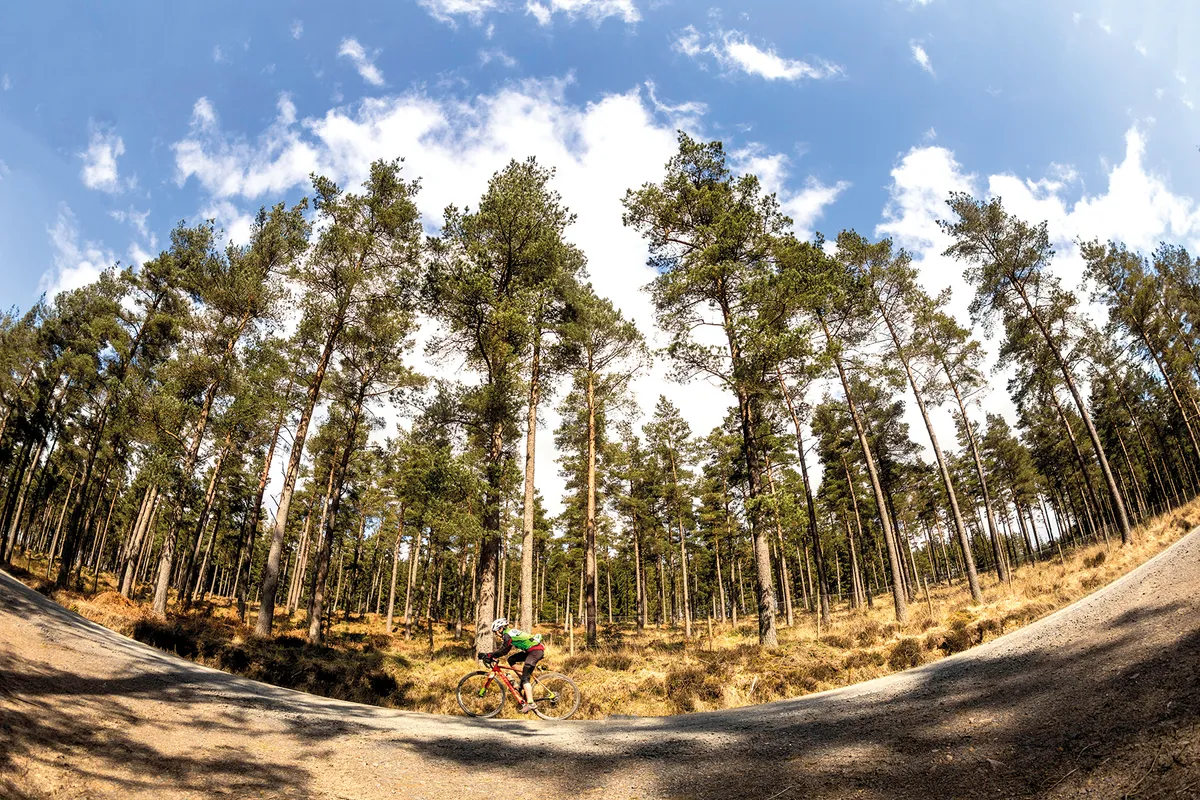
A plantation seems dead and alive at the same time. The other thing about a sitka plantation is that when you’ve seen one, you really have seem them all: perfectly spaced trunks, dark green fronds, the rusty red bed of needles are invariable.
And then you come across an area that’s been harvested. What a scar. Sheared off trunks, the caterpillar tracks of the machinery that have bitten hard into the ground and the bleached dead remains of the branches and stumps that are slowly being encroached on by weeds.
They say people would eat less meat if they understood intensive livestock production. I was left thinking people might go easier on loo paper if they knew what logging entailed too. Still, the endless fields of saplings –three and a half million new trees are planted each year – showed that while it had its ugly moments, at least it is sustainable.
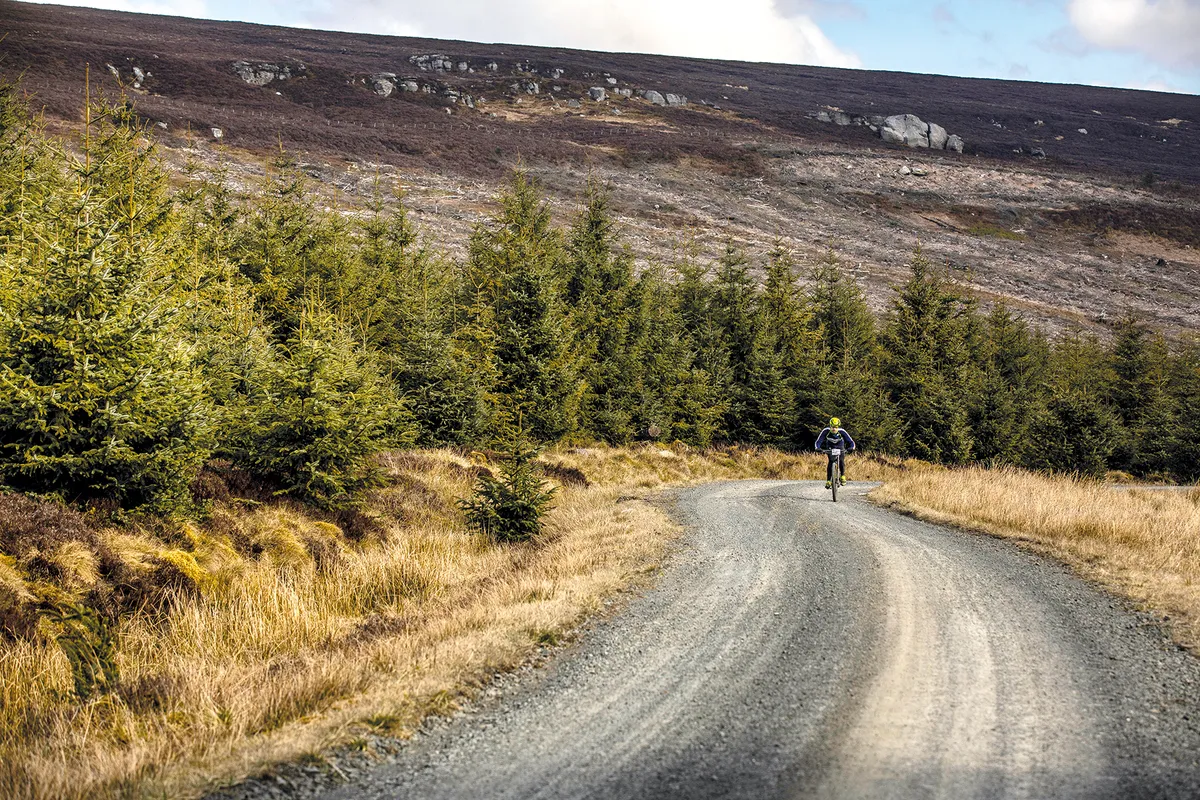
The best landscapes came early. The views just before dropping down to the first feed station looked east over the majesty of Northumberland National Park. The roof of the route at Kielderhead, at 465m, afforded sumptuous views north west towards the wild Southern Uplands in Scotland.
A curious sensation of the route is that it rolls on over hill and dale. Singleton said the organisation had been at pains to avoid doing tight little loops. “One thing we try to do with the Reiver is get it to feel like a constant flowing journey. We want people to go out there and feel like they’ve had an adventure; like every turn is a different vista and you don’t feel like you’re repeating the same old thing again.” They have made the most of their luxury of a large canvas.
In the spirit of adventure, Reiver riders must be self-sufficient. The concession though were three generous feed stations. Participants were advised to make up a food parcel that would be transported to the second feed station just after 110km. I did, and voila, there it was: some squashed fruit cake and an energy drink. The organisation in general was super.
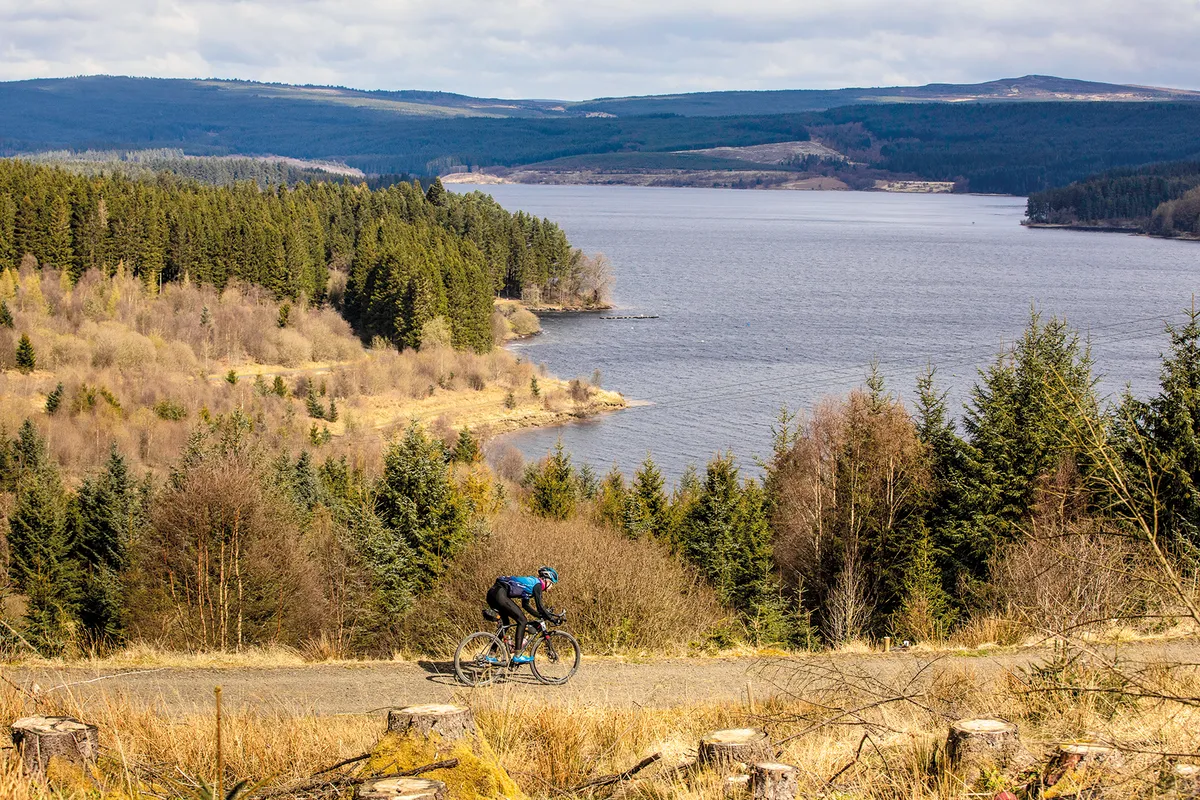
If I made a good decision to start too slowly, it led to a questionable one 2km after the second feed station. Here, the 130km and 200km routes diverged. I should have opted for the former, but I was well sugared up and some light peer pressure from a friendly marshal - “Ha’way man, do the 200, there’s a good lad” – forced me to go right.
Fifteen minutes later, grovelling up some interminable climb while I digested an ill-advised number of free jelly babies, the agonies began.
The cold tickle that precedes cramp ran up and down my legs. My back ached and my heart rate had all the revs of a clapped out tractor. Each climb was a new torment. I cursed every chip that deflected the bike off the white line. The transformation into a stayer I had banked on never happened.
Deep into the ride, when I looked forward or back in spots with a long view there was no one else. Keilder’s vastness had swallowed me up and the survival blanket was scant comfort.
Nothing – not honour or a lost sense of achievement – was going to keep me going any longer than absolutely necessary
I enjoyed a brief second wind in the 40 minutes prior to the final feed station, where indeed the gravel did feel fast. I told myself not to ruin my revival by eating too much, but there were delicious buttery new potatoes and sugary tea on offer and so, of course, I ruined it.
So began the worst three and a half hours to the finish. I was too hot, then too cold. But mostly I was just creeping forward in pain.
An addition this year was the Lauf timed stage, which came after 180km of riding. The fastest man and woman through the section would be rewarded with a pair of the sponsoring company’s suspension forks plus tickets and entry to more misery at The Rift, a big gravel ride in Iceland.
The section was up a big hill on terrible gravel and down the other side. On the climb I had ample time to make up weak puns as I crawled upwards: ‘You must be having a Lauf,’ I thought; ‘If you don’t Lauf you’ll cry.’ I wish I remembered that one when my saddlebag sheared off.
As I sucked up my gel I got out my phone to find a shortcut home through the spruces. Nothing – not honour or a lost sense of achievement – was going to keep me going any longer than absolutely necessary. But then this was Kielder, home to England’s remotest point, and of course I had no signal.
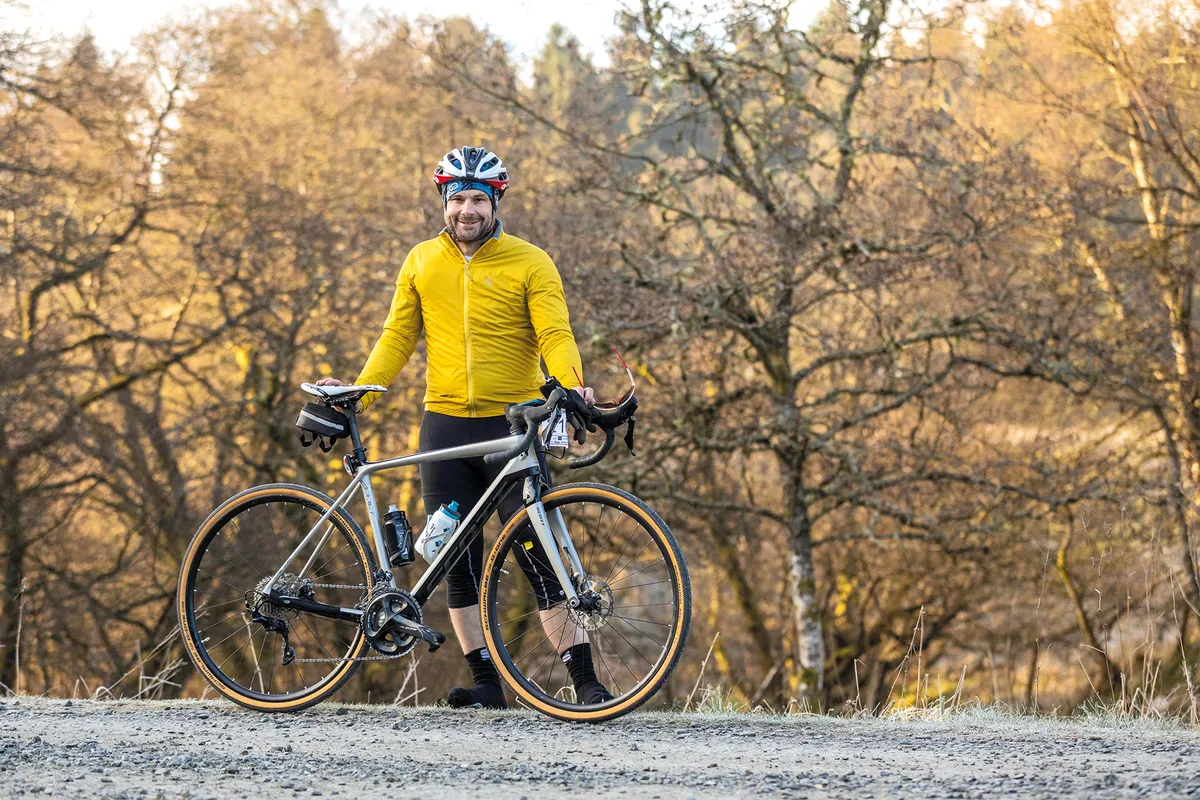
Though the final few kilometres were on Kielder’s smooth cinder bike paths around the reservoir, I stopped three or four times to give my wracked body a break. Eventually I made it over the finish line seriously wondering if I now had PTSD.
Michael, the photographer tasked with capturing mine and the Scott’s triumphal arrival nine hours and 33 minutes after I had first left the place, was nowhere to be seen – he’d gone for a pee. The ignominy.
He found me pushing into the queue for a beer and wrap and asked if I would mind re-staging the shot. I did mind, but assented on the bike’s behalf.
Bar the saddlebag incident, it had been a flawless and sympathetic companion. If anything, I had let it down. The refreshments were a salve of sorts, as was the next morning’s massive, delicious, fit-for-a-Reiver breakfast at the guest house where I fell asleep in dusty, sweaty kit. But it would be a full four weeks before the thought hit me. Actually, I’d like to do that again.
The Dirty Reiver is held annually in April, and next year's is due to take place from 17 to 18 April. Check its website, The Dirty Reiver.